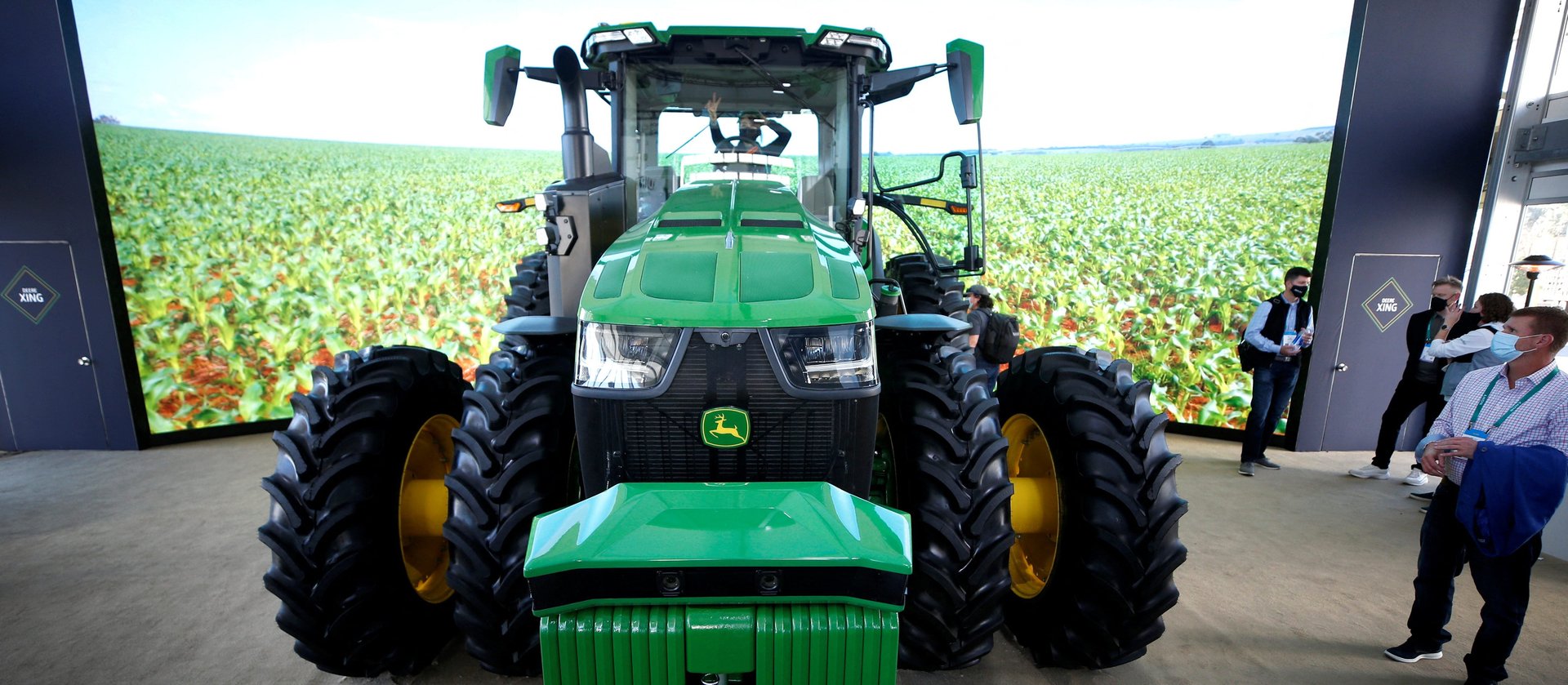Can autonomous tractors solve farming’s labor issues?
Farmers will soon be able to operate a 30,000 lbs John Deere tractor from an app.


Farmers will soon be able to operate a 30,000 lbs John Deere tractor from an app.
At the Consumer Electronic Show (CES) in Las Vegas last week, Deere announced it will release a fully autonomous version of its signature green and yellow 8R tractor for purchase this year. The tractor will move through the fields plowing the soil, without the need for a human sitting in the vehicle.
The tractor won’t come cheap. The company did not disclose a cost, but Deere’s conventional 8R series tractors can approach $500,000. Deere said it is exploring subscription options, Wired reported.
It’s a big step for Deere. In 1837, the same agricultural manufacturing company came up with the steel plow. In recent years, the company has increasingly positioned itself as a tech company and since the mid-1990s, Deere has been using GPS data to determine crop yields. “If you visit a farm, you’ll see as much technology in the field as you do in Silicon Valley,” said Jahmy Hindson, chief technology officer at Deere, at a CES press conference.
The autonomous tractor is equipped with 12 cameras that allow it to sense its environment and make adjustments to its route. When the tractor detects a foreign object outside its standard classification of objects, it will stop in its tracks. Unlike an autonomous vehicle on a road, there are less variables for a tractor on a farm, and it can run on its own all day. The machines have been trained on thousands of images of farms from the past three years, and will continue to improve, as they collect more data, according to Deere.
Using robots to solve labor challenges
One of the biggest ongoing challenges for farmers is finding labor, and self-driving tractors could help.
Fewer people are starting careers in agriculture, said Deanna Kovar, Deere’s vice president of precision agriculture production systems, during the conference. The average US farmer is over 55-years-old (pdf) and as rural populations dwindle across the midwest, migrant workers are not able to make up the difference. At the same time, the job isn’t easy: Farmers can work over 12 hours a day. Automating parts of the farm could give workers more time back while eliminating labor costs, according to the company.
But as the technology get more sophisticated, farmers will have less control over operations and become ever more dependent on one big company. Deere accounts for more than half of all farm machinery sales in the US and more than a third of equipment revenue worldwide, reported Bloomberg. Farmers own the hardware, but the software is still controlled by the company. When machines break, farmers need a Deere dealer to diagnose the problem. Some farmers say that it can be more costly than sending it to a local mechanic.
For Deere, parts and services are three to six times more profitable than sales of original equipment, reported Bloomberg. If farmers had more control over the parts and services, that could hurt Deere’s business.
States have been increasingly taking up this issue. Right-to-repair legislation has been introduced in at least 25 states and a national bill was filed in Congress, which would require manufacturers to provide owners and repair shops access to software diagnostics, service manuals, parts, and information needed to fix the machinery.